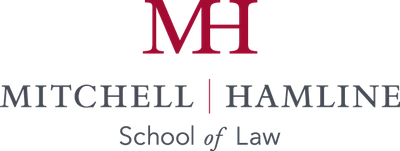Mitchell Hamline School of Law is committed to complying with all applicable intellectual property and copyright laws of the United States. The School provides this information to assist faculty, staff and other community members in understanding and complying with copyright law. It is not a comprehensive or exhaustive guide to the wide diversity of contexts in which the use of copyrighted materials arise nor is it a substitute for legal advice.
Copyright in Education Contents
- Part 1. Copyright Generally
- Part 2. Copyright in Education Basics
- Part 3. Summary of the TEACH Act (17 U.S.C. 110(2))
- Part 4. Linking to Textual Content
- Part 5. Guidance on Applying the Factors of Fair Use
- Part 6. Linking to Audio/Visual Content from the Web in Your Canvas Course
Summary of the TEACH Act (17 U.S.C. 110(2))
The Technology, Education and Copyright Harmonization Act of 2001 (the TEACH Act) was enacted by Congress in 2002. It amended Title 17 of the United States Code to redefine the terms and conditions under which accredited, nonprofit educational institutions may use copyright protected materials in distance education or any other “transmission” of copyrighted content to students. It is codified at Section 110(2) of the U.S. Code.
The TEACH Act covers broadcasting of digital transmissions during synchronous and asynchronous distance education. It permits:
- performances of nondramatic literary or musical works;
- performances of any other work, including dramatic works and audiovisual works, but only if “reasonable and limited portions” of the work are used; and
- displays of work comparable to the use typical in face-to-face classroom sessions.
Two types of content are specifically excluded from the TEACH Act exception:
- Materials that are produced or marketed, including textbooks and compilations, for the express purpose of distance education (the exception seeks to preserve the general market for distance education materials as well as the incentives to create and distribute such material).
- The exemption is inapplicable if the performance or display comes from a copy that is not lawfully made or acquired. An inadvertent acquisition may not disqualify the display or performance but actual knowledge or having a “reason to believe” that a copy is illegitimate may constitute an unlawful acquisition.
The transmission of video or audio material over the internet poses a unique threat to the interests of copyright holders that is not present in the use of materials in face-to-face teaching sessions. When material is uploaded to websites and transmitted digitally it is easily downloaded and disseminated by the recipient. In-class display does not create such opportunities. The TEACH Act attempts to balance the interests of copyright holders to limit the unlawful reproduction and dissemination of copyrighted material with the interests of educators to use such content for teaching, scholarship and research — all traditionally allowed by the exceptions already permitted by copyright law. As a result, the TEACH Act will allow many uses of materials, but only with restrictions.
The TEACH Act is relevant only to transmissions. If the instructor is displaying or performing materials in a traditional face-to-face class, Section 110(1) applies (even when the class is part of a hybrid or blended course). If the instructor is making copies and handouts, fair use is the applicable exception.
One of the conditions on permitted use is that copyrighted content be “directly related and of material assistance to the teaching content of the transmission.” If the copyrighted content is for entertainment or unrelated background, then the materiality requirement would not be satisfied.
The performance or display must be “made by, at the direction of, or under the actual supervision of an instructor as an integral part of a class session.” Either an instructor or a student may initiate the performance or display, but it must be an integral part of the class session. For example, a student could attach a short video or audio clip to a discussion board post. “Actual supervision” is flexible under the TEACH Act because in asynchronous learning the student and instructor are seldom interacting in real time.
The Copyright Office and the Senate Judiciary Committee were explicit that nothing in the TEACH Act’s amendments to the Copyright Act should be construed as altering the scope or applicability of fair use.
Fair use is a critical part of the distance education landscape. Not only instructional performances and displays, but also other educational materials or student downloading of course materials, will continue to be subject to the fair use doctrine. Fair use [applies] as well to instructional transmissions not covered by the changes to section 110(2) … above. Thus, for example, the performance of more than a limited portion of a dramatic work in a distance education program might qualify as fair use in appropriate circumstances.
Copyright Exceptions for Distance Education: 17 U.S.C. § 110(2), the Technology, Education, and Copyright Harmonization Act of 2002, the Congressional Research Service (2006) citing S. Rept. 107-31 at 15, citing the Report on Copyright and Digital and Distance Education at 161-62.
The TEACH Act imposes obligations upon Mitchell Hamline School of Law as an institution to advise students of copyright law, to take reasonable technological measures to prevent the unlawful copying and redistribution of copyrighted materials made available to students through transmission in its learning management system and to advise and assist faculty in complying with the TEACH Act’s instructional and content restrictions.
